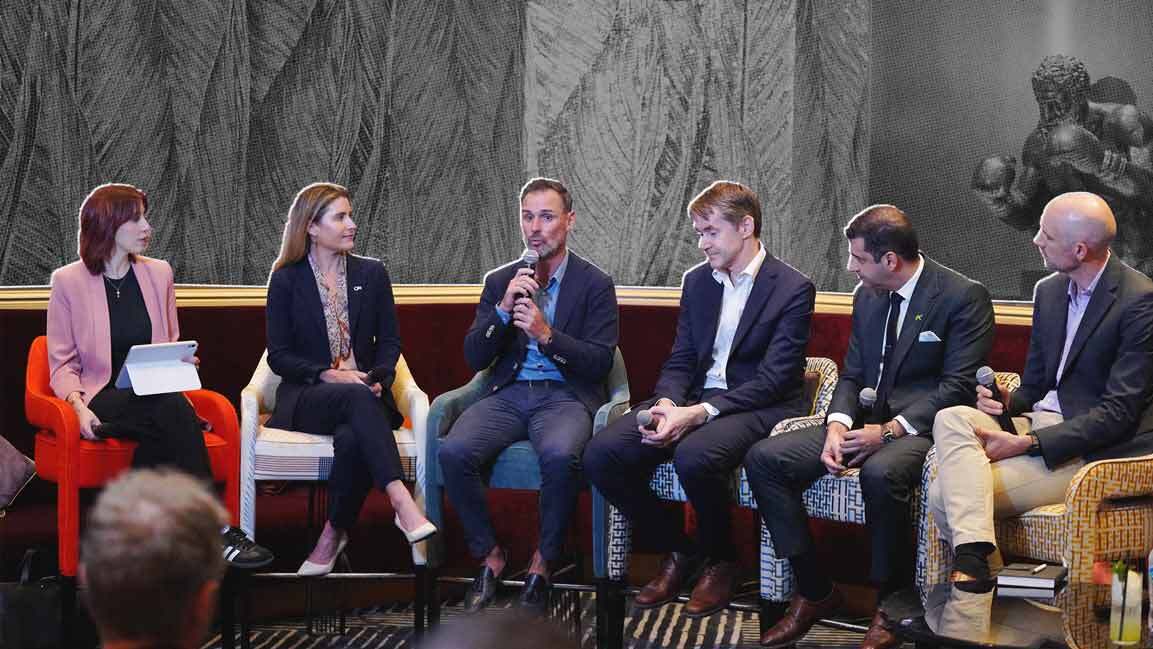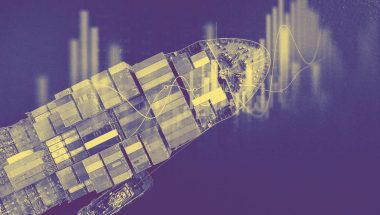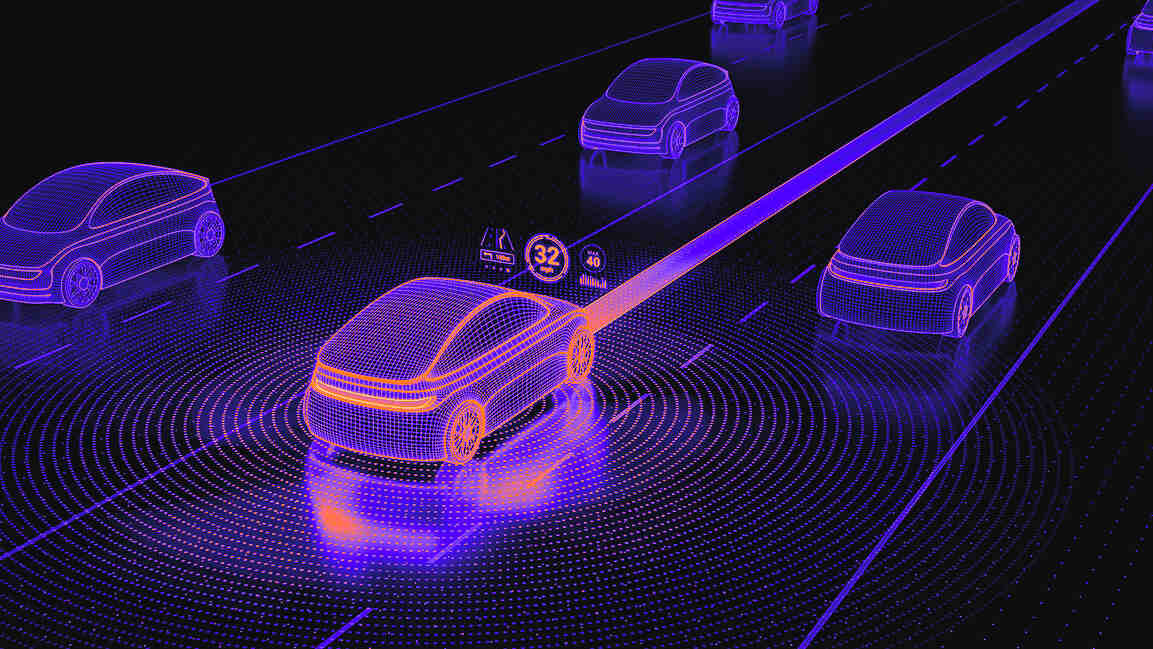- | 10:00 am
How can companies balance AI adoption and environmental responsibility?
Fast Company Middle East’s Grill brought together experts to discuss the potential of AI for sustainable solutions.

Artificial intelligence (AI) continues to revolutionize industries and reshape our world, but what does that mean for our climate goals?
While AI presents immense potential for innovation and problem-solving, it also demands significant energy consumption and resource utilization, which could hinder the sustainability goals many countries strive to achieve.
Striking a balance between technological advancement and environmental responsibility is crucial for ensuring a sustainable future.
A panel of experts from Solutions+, G42, Veolia Middle East, MBZUAI, and Khazna Data Centers explored AI’s potential to drive sustainable solutions and the responsibilities of various stakeholders in maintaining this balanced approach.
This edition of Fast Company Middle East Grill is brought to you in collaboration with Solutions+, a Mubadala-owned subsidiary specializing in business process outsourcing (BPO) and digital facility management services for the Group and its affiliates.
The panelists discussed the role of different sectors, including government bodies, academia, and businesses, in upholding sustainability principles and ensuring that AI is used responsibly.
The company is involved in sustainability projects, including Project DECARB, a Mubadala-led initiative to decarbonize operations. Solutions+ has identified 115 energy-saving initiatives to reduce energy consumption and lower carbon emissions through this project.
“We’re hoping that we can take what we learn to SMEs who can’t necessarily implement any of these things,” stated Adam Hoult, Commercial Manager of ESG at Solutions+.
BALANCING AI GROWTH WITH SUSTAINABILITY
As technology evolves, achieving carbon-neutral targets is becoming increasingly difficult. Amy Lehoczky, Director of ESG at G42, says we’re currently in “a climate tech nexus.”
“The World Economic Forum reports that technology can reduce global emissions by up to 20%. On the flip side, we know that data centers, including AI data centers, are huge energy consumers,” Lehoczky explains.
She references a report by the International Energy Agency (IEA) indicating that data centers currently account for 1% of global energy consumption, projected to rise to 4 to 5% by 2030. She emphasizes that addressing this challenge begins with conversations like this one.
“Collaborative partnerships will help us decarbonize our existing assets and infrastructure and, importantly, look into the horizon. How moving into the future with this enormous growth in AI on how we can design, construct and operate more sustainable infrastructure.”
Ziad Samaha, Vice President of New Business, Khazna Data Centers, says data centers are seen as the enemy of nature and historically they have been.
“All the elements of the infrastructure of a data center traditionally are very high in terms of carbon emission. But as technology evolves and sustainability targets and goals are established, data centers had to adapt and work towards achieving those targets.”
Samaha explains that achieving sustainability in data centers is not an overnight process or a single-step solution. It involves adapting multiple components within the data center, all working together to meet sustainability goals.
He highlights initiatives implemented by his organization, including adopting adiabatic cooling instead of traditional chillers, using biofuels for generators, and integrating various energy sources like solar power.
Hoult stresses that clean energy is the key to progress, pointing out that 30% of global energy comes from renewable sources. He also emphasizes the importance of addressing the energy consumption of industrialized nations. While acknowledging that carbon credit programs can be contentious, he believes they are vital in financing greener energy initiatives in developing countries.
“You won’t necessarily see the full benefit of these efforts for years, but all these things are moving the needle further in the right way.”
AI AS A SOLUTION
Since its emergence, AI has often been seen as a threat to sustainability, but could it instead be a key part of the solution?
Lehoczky emphasizes the significant potential of AI in climate tech solutions. She reflects on the devastating floods that impacted the UAE last April, posing an important question: how might the situation have changed if we could predict such disasters? Would we have been able to respond more proactively and mitigate the effects?
“This is where climate tech solutions are increasingly coming to the market.”
She explains the critical need for insights not just into current weather events but also into future patterns. As climate change is projected to heighten the intensity and frequency of storms, a more detailed understanding of when floods are likely to occur can facilitate proactive adaptation and mitigation efforts, ultimately minimizing their impacts on society and the environment.
This area is experiencing substantial growth as technological solutions enhance informed decision-making for various events, from hurricanes in the Americas to wildfires in Europe and Australia.
By harnessing big data, AI predictive modeling, and geospatial solutions, we can gain a deeper understanding of how to mitigate climate events’ effects on the environment and local communities.
Jerome Viricel, General Manager of RECAPP at Veolia Middle East, asserts that leveraging AI for sustainability is not just feasible—it’s already happening. He points to how his organization employs AI to enhance the efficiency of its sustainability practices.
Viricel elaborates on the work at Veolia’s R&D department in Paris, where AI-driven waste sorting technologies are being developed to improve accuracy and efficiency in waste segregation. This innovation aims to significantly reduce carbon emissions associated with landfills and incineration.
On a smaller scale, Jerome’s department focuses on using AI to extract value from waste, contribute to resource conservation, and support the local economy through recycling. This AI initiative has been in development for about ten years.
“AI is a great example of creating value from something that most people consider waste while also boosting the local economy,” Viricel states.
THE ROLE OF BUSINESSES
As AI advances, organizations must carefully evaluate its environmental impact, especially given the increasing demands of data processing and machine learning. Companies should prioritize sustainability in their AI innovations from design to deployment.
Samaha emphasizes the need for organizations to establish clear expectations around AI’s role in reducing carbon emissions. He notes that achieving significant results will take time, as AI models require a period of learning and evolution to realize their full potential.
Additionally, he emphasizes that collaboration is essential, as no single entity can achieve these goals alone, highlighting the importance of collective efforts.
“As organizations integrate AI into their operations, they must remember that they can’t do it alone. They need to trust others, share information, and rely on the expertise of those they recognize as subject matter experts,” Samaha adds.
Lehoczky emphasizes the importance of integrating commercial and carbon perspectives in the design and operation of data centers, hospitals, and offices.
This approach requires a whole lifecycle perspective, investing more upfront to optimize designs for efficiency and incorporating passive design principles. Over time, this strategy leads to cost savings through reduced utility and maintenance expenses. It aligns commercial and environmental objectives while leveraging incentives and partnerships to facilitate meaningful change.
Professor Timothy Baldwin, Provost and Professor of Natural Language Processing at the Mohamed bin Zayed University of Artificial Intelligence (MBZUAI), emphasizes the role of academia in effectively guiding innovations and solutions.
He points out that, without direction, teams may create pseudo-problems and address issues that aren’t genuinely significant. This approach is not an efficient use of time or expertise. Instead, the real value emerges when individuals present genuine, complex challenges that require collaborative efforts, fostering meaningful partnerships in the search for solutions.
It’s also important not to assume that the latest technology, like GPT-4, is the right tool for every problem.
“It’s like buying a Swiss Army knife to cook. It’s possible, but I wouldn’t recommend it. You won’t end up with a good solution at the other end. So you must determine the right tool for the problem.”
Baldwin explains that institutions like MBZUAI, with deep technical expertise and industry experience, play a vital role in developing fit-for-purpose solutions through these collaborations.
THE FUTURE OF RESPONSIBLE INNOVATION
Despite the rapid advancements in AI, much remains to be discovered and addressed. Hoult discusses the necessary steps to ensure the next wave of AI developments is innovative and environmentally responsible.
“This probably is a little controversial. I’m very cautious of people trying to solve problems,” Hoult states.
He explains that various challenges can arise from automation and AI if processes aren’t adequately addressed beforehand. Typically, teams involved in business operations concentrate on process mapping and engineering.
The principle is straightforward: if a task cannot be executed correctly manually, it shouldn’t be digitized, as doing so may lead to additional complications.
“You need to do a lot of pre-work before implementing an AI solution. Make sure you know what you’re after and when you realize the actual problem and, you’ve got a genuine process with no blockages. Then, go to town with AI and everything and optimize the day out of it. But I always urge people to take caution,” he adds.
Baldwin emphasizes that the focus should be on the human element of AI, particularly regarding the usability of models and their fit for purpose. A key consideration is how individuals interact with these models and how seamlessly they integrate into existing business processes. The models should enhance operational efficiency without disrupting workflows or creating unnatural modes of interaction.
“It must be done with an understanding of the environment and real human needs. The human factor is important so you don’t get the techies trying to tackle problems with brute force.”
Lehoczky highlights the importance of diversity when developing AI.
“A diversity of voices and subject matter experts is essential. We come from different backgrounds, and we’re all learning from one another on various topics. These discussions help us leverage the scale and possibilities of AI, combined with human insights,” she states.








































